In the captivating world of sports, every game has its own special lingo that not only sets it apart but also brings its players closer together. Take pickleball for instance – it’s a fun mix of tennis, badminton, and table tennis, and it’s got its own set of unique terms. If you’re new to the game, don’t sweat it! In this blog post, Pickleballplanny will explore some common pickleball terms and their meanings to help you become more familiar with the language of the game.
Why Language Matters in Pickleball
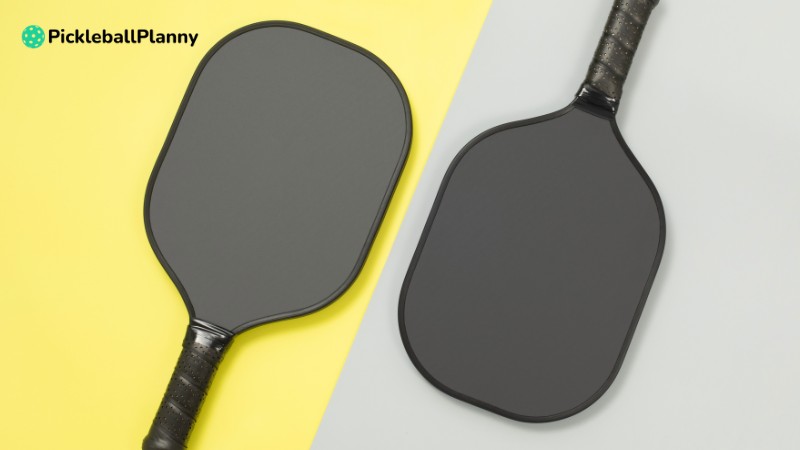
Pickleball, a rapidly growing sport that combines elements of tennis, badminton, and ping pong, has developed its own unique terminology over the years. Whether you’re a beginner just learning the ropes or a seasoned player looking to brush up on your knowledge, understanding pickleball terms and definitions is essential for improving your game and communicating effectively on the court.
Picture this: the ball bouncing rhythmically, paddles swinging swiftly, and the shouts of ‘dink’ and ‘fault’ filling the air. That’s pickleball for you! But it’s not just about knowing what these terms mean.
It’s about improving how you communicate with your doubles partner, getting a handle on game strategies, and really diving into the pickleball community. In short, getting the hang of the lingo just makes the game that much more fun!
Pickleball Terms & Definitions
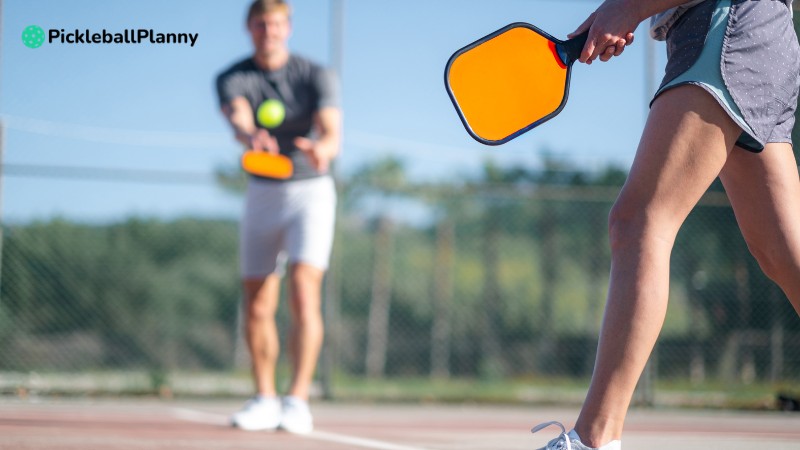
Before we delve into the intricacies, let’s decode the foundational terms:
- Paddle: Your primary tool in the game. Unlike tennis rackets, these don’t have strings. Made of solid materials like wood or composite, they’re pivotal for those powerful shots.
- Net: This central barrier stands 34 inches tall at the center. Its purpose? To challenge you to lob the ball over it while adhering to game rules.
- Serve: The act that initiates the play. In pickleball, serves are underhand, propelling the ball diagonally into the opponent’s court.
- Volley: A move where the ball is hit, without letting it bounce first. But remember, there’s a twist when volleying near the net!
Court Related Terminologies
Pickleball courts, although resembling their tennis counterparts, have specific sections and markers:
- Baseline: The rear boundary. This is where players stand to serve and often defend.
- Sideline: The court’s side boundaries. They extend and meet the baseline.
- Non-volley zone (or the Kitchen): Perhaps the most distinctive feature of a pickleball court. This zone flanks the net, and volleying within it is a no-go.
- Centerline: Bisecting the court, this line distinguishes the left and right service areas.
Explore more with blog: The Evolution of Pickleball Paddles: From Wood to Composite
Scoring Specific Jargon
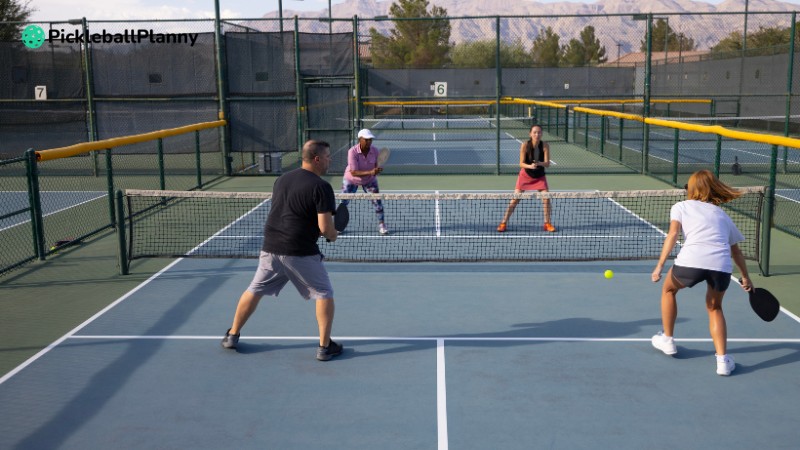
Pickleball scoring can seem convoluted at first, but understanding these terms can make it much clearer:
- Server Number: In doubles, this denotes whether you’re the first or second server for your team.
- Fault: Any error that halts the play. This could be hitting the ball out of bounds, committing a kitchen violation, or a failed serve.
- Rally: The continuous back-and-forth after the serve until a fault occurs. A successful rally for the serving team earns a point.
Advanced Play and Strategy Terms
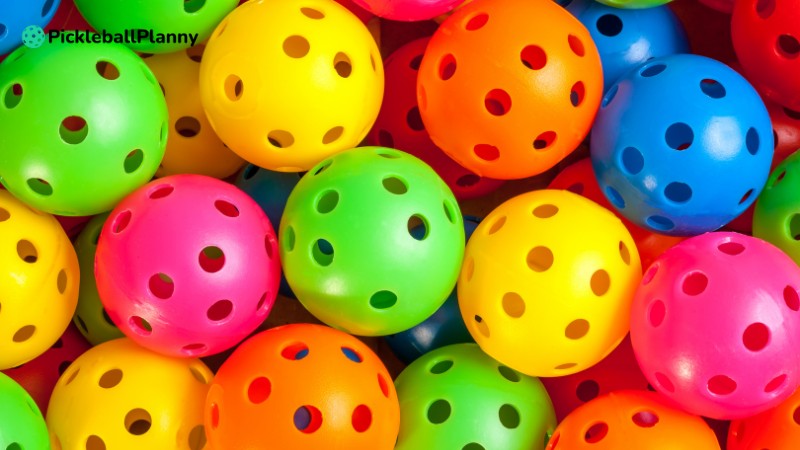
As players refine their skills, they’ll encounter deeper strategies, each with its lingo:
- Dink: Not just a quirky term! A dink is a strategic, soft shot, aimed to drop just over the net into the non-volley zone, making it hard for opponents to return with power.
- Poach: This isn’t about eggs! In doubles, poaching occurs when a player encroaches on their partner’s territory to take a shot.
- Third Shot Drop: Often the third stroke in a rally, this shot is a soft, arcing hit aiming to land in the opponent’s kitchen, forcing them to hit upwards.
- Stacking: A positioning strategy, especially in doubles, where teammates align themselves based on their strengths, irrespective of the serving order.
Find out more information about: Is Pickleball an Olympic Sport?
Culture and Community Lingo
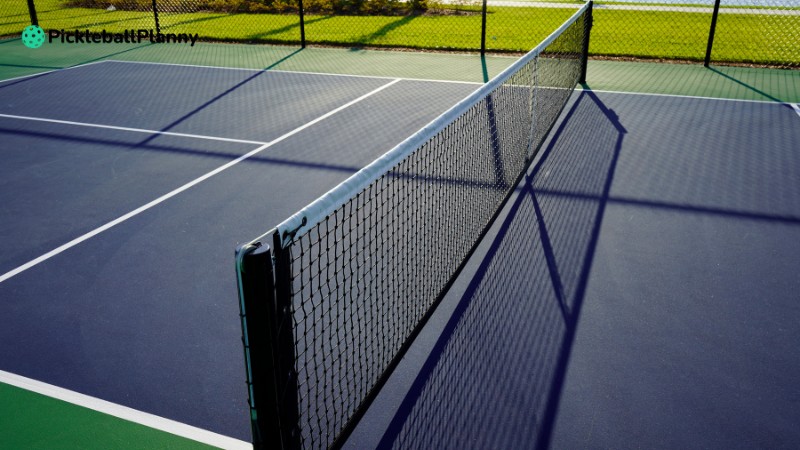
The pickleball community, with its vibrant and welcoming nature, has birthed terms that transcend the court:
- Paddle Tap: A warm, sportsmanlike gesture, akin to handshakes in other sports. After a game, players often tap paddles in appreciation.
- Round Robin: A congenial tournament style. Everyone plays against everyone, promoting fair play and camaraderie.
- Pickleball Ambassador: Individuals passionate about propagating the sport. They promote pickleball in regions, schools, and communities.
Fun and Informal Jargon
Sprinkled in the game are some light-hearted terms:
- Pickle: Beyond its culinary reference, pickleball, signifies a tricky situation in gameplay, often when players are caught off-guard.
- Kitchen Party: When players engage in a series of dinks, gently nudging the ball over the net, it’s fondly termed a kitchen party.
Conclusion
The world of pickleball, with its dynamic play and spirited community, is a realm waiting to be explored. With this glossary at your side, you’re not just equipped with knowledge; you’re primed to immerse yourself fully into the game’s culture. So, paddle in hand, step onto the court, and let the rallies, dinks, and kitchen parties begin!
FAQs about
What is the difference between a dink and a drop shot in pickleball?
While both dinks and drop shots are soft shots aimed to land in the opponent’s non-volley zone, a dink is typically hit over the net with a downward trajectory, while a drop shot is hit with backspin to make the ball bounce low and close to the net.
Can you volley the ball from inside the kitchen?
Yes, you can volley the ball from inside the kitchen as long as you have established your position outside of the non-volley zone before hitting the ball.
What is the purpose of hitting a third shot drop in pickleball?
The third shot drop is used to initiate the rally after the return of serve by hitting a soft shot with backspin that lands in the opponent’s non-volley zone, putting pressure on them to hit an upward shot.
How do you perform an Ernie in pickleball?
To perform an Ernie, a player runs to the side of the court to hit a volley before the ball bounces, often catching the opponent off guard and resulting in a winning shot.
What are the dimensions of a pickleball court?
A pickleball court measures 20 feet wide by 44 feet long for doubles play and 20 feet wide by 22 feet long for singles play, with specific boundary lines marking the various zones of the court.

